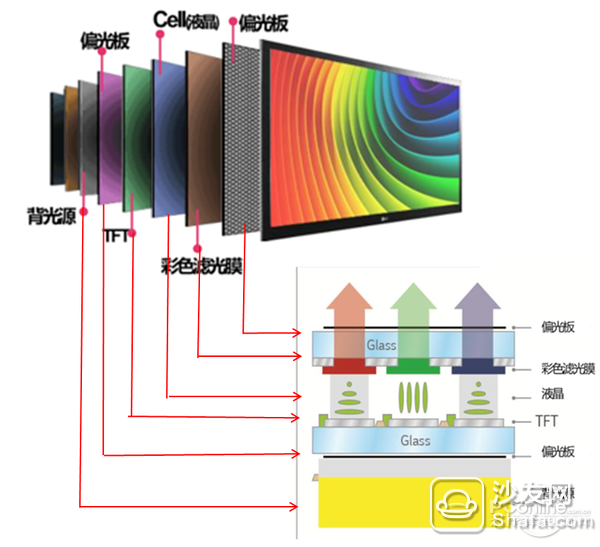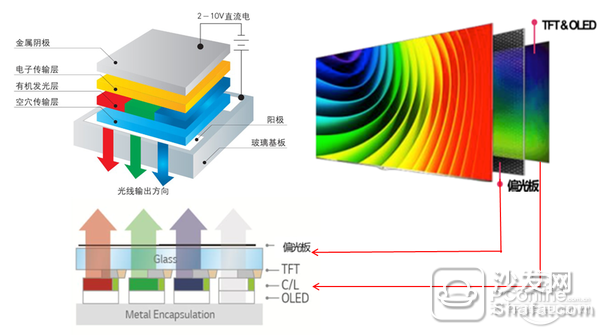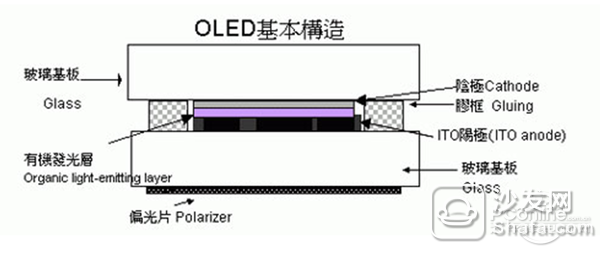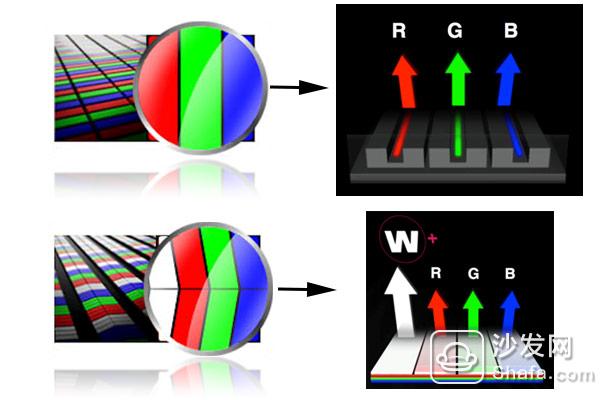[PConline Applications] LCD technology has occupied almost all of the display parts of consumer electronics devices for a long time. Liquid crystal technology seems to have reached its peak in recent years, and various improved technologies have emerged one after another. However, the evolution of history tells us that “the prosperity is bound to declineâ€. It is not that the liquid crystal technology is retrogressive, but that the rapidly evolving technology has spawned a new display technology revolution. It is superior to liquid crystal, and it is the third generation of display technology OLED. The typical representative is the Skyworth OLED organic TV S9 series that was first mass-produced in the near future. It has a variety of inherent advantages of OLED, such as the most pure black, unlimited contrast, high response speed, closer to the natural color performance, a wider perspective. In order to better prove why OLED is a revolutionary technology that goes beyond LCD technology, the author will do a structural anatomy on these two technologies, take the crown on their heads, fade the complicated coats, and restore the most authentic Inner composition. The structure of the liquid crystal display technology is very complicated. First, the liquid crystal molecules do not have the property of active light emission. Therefore, to provide a light source for the television image through the backlight, an LED lamp is generally provided as a light source around the display screen, and light is irradiated on the backlight. The board is reflected again. The light at this time may be scattered, and it is necessary to adjust the astigmatism to the same level direction through the polarizer, so that the problem of the backlight is solved. How can we show colorful colors? From the figure above, we can see that the liquid crystal molecules are sandwiched by two glass substrates. The lower glass has a thin film transistor embedded in it, and the upper glass substrate is closely attached to the color filter. When the electric current changes the electric field through the transistor, causing the liquid crystal molecules to deflect, so as to change the polarization of the light, and then use the polarizer to determine the brightness and darkness of the pixel. The upper glass is attached to the color filter to form three colors of red, blue, and green for each pixel. The display screen is composed of a number of pixels that can emit light of any color, so as long as the control of each pixel displays the corresponding color, the purpose of image output can be achieved. However, on the other hand, OLED display technology will feel much simpler. The OLED display technology requires no backlight or liquid crystal, and the organic layer can emit light when energized. Each pixel is independently driven by a corresponding circuit, and the thickness of the organic thin film layer can be very small, only about 1,000 to 1,500 A degrees (0.10 to 0.15). Um). The OLED organic material is composed of a thin and transparent indium tin oxide (ITO) with a semiconducting characteristic, which is connected to the positive electrode of the electric power, and another metal cathode, which is formed into a sandwich structure. The entire structural layer includes a hole transport layer (HTL), a light emitting layer (EL) and an electron transport layer (ETL). When the power is supplied to an appropriate voltage, positive hole and cathode charges are combined in the light emitting layer to produce light, and red, green, and blue RGB primary colors are generated according to different recipes to form a basic color. If you do not understand it, you can think of it as our common LED lamp beads. The principles between them are very similar. Why does Skyworth and LG's OLED organic TVs use the 4-color 4K solution? There are two reasons. First, the sub-pixels of the 3 color 4K OLED are only 3840×2160×3=24,883,200, while the 4 color OLED sub-pixels are 3840×2160×4=33,177,600, which is 1.33 times the number of ordinary three-color sub-pixels. Second, three-color 4K OLEDs need to display white, red, yellow, and green pixels all need to be lighted. The brightness is low, power consumption is large, and the service life is short, but the process is simple. However, the 4-color 4K OLED with white pixels has greatly improved brightness, low power consumption, and long life, but its process difficulty and cost are high. Skyworth and LG chose the 4-color 4K OLED solution. Each sub-pixel can control the light independently. The picture quality is clear and the color is delicate. Summary: In terms of technology, OLED is definitely better than LCD, simpler structure, more direct and effective light-emitting mode, and thinner and safer product form. OLED becomes the mainstream display technology in the future. Skyworth and other TV makers seized this opportunity to rise and spread wide channels for OLED. The popularization of new technologies will take time, but these times will also precipitate the product, let the market discover, and ultimately allow OLED to go further.
For the Oil Immersed Aouto Transformer, we can produce voltage of 220kV, 330kV and 500kV and capacity upto 460MVA. We use the best quality of raw material and advance design software to provide low noise, low losses, low partial discharge and high short-circuit impedance for Power Transformer.
Our power transformer are widely used in national grid, city grid, rural grid, power plant, industrial and mining enterprise, and petrochemical industry.
Power Plant Transformer,Auto Power Transformer,Auto Transformer,High Quality Auto Power Transformer Hangzhou Qiantang River Electric Group Co., Ltd.(QRE) , https://www.qretransformer.com

Basic structure of LCD technology 
The basic structure of OLED display technology 
OLED organic material basic structure 
3 color 4K and 4 color 4K